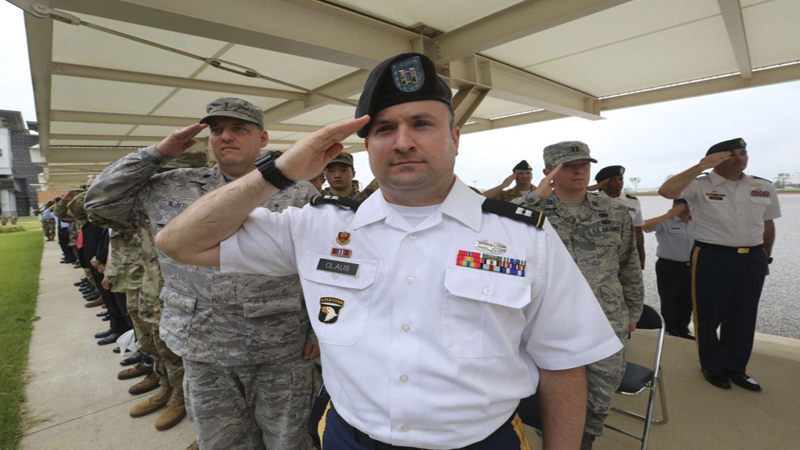 The United States formally ended seven decades of military presence in South Korea’s capital Friday with a ceremony to mark the opening of a new headquarters farther from North Korean artillery range.
The United States formally ended seven decades of military presence in South Korea’s capital Friday with a ceremony to mark the opening of a new headquarters farther from North Korean artillery range.
The command’s move to Camp Humphreys, about 70 kilometers (45 miles) south of Seoul, comes amid a fledgling detente on the Korean Peninsula, though the relocation was planned long before that. Most troops have already transferred to the new location, and the US says the remaining ones will move by the end of this year.
The US military had been headquartered in Seoul’s central Yongsan neighborhood since American troops first arrived at the end of World War II. The Yongsan Garrison was a symbol of the US-South Korea alliance but its occupation of prime real estate was also a long-running source of friction.
Located in the western port city of Pyeongtaek and close to a US air field, the new 3,510-acre (1,420-hectare) command cost $11 billion to build and is the largest overseas US base. South Korea has paid about 90 percent of the cost.
“This headquarters’ building, within the headquarters’ complex that surrounds it, represents the significant investment in the long-term presence of US forces in Korea,” Gen. Vincent Brooks, the commander of US Forces Korea, said during the opening ceremony. “US Forces Korea will remain the living proof of the American commitment to the alliance.”
In a message read out at the ceremony by an aide, South Korean President Moon Jae-in said that the headquarters is the cornerstone of the US-South Korea alliance.
“In opening a new era of the US forces headquarters in Pyeongtaek, I hope that the US-South Korea alliance will develop beyond a ‘military alliance’ and a ‘comprehensive alliance’ and become a ‘great alliance,'” Moon said in the statement.
The relocation is part of a broad US plan to realign its 28,500 troops and their bases in South Korea into two major hubs: one in Pyeongtaek and the other in the southeastern city of Daegu. US officials say they want to move out of highly populated areas and improve efficiency and military readiness.
“Modern warfare is all about concentrating and deploying forces quickly, and Pyeongtaek in these terms has many advantages because it can really function as an outlet, unlike Yongsan, which was stuck in the middle of a population center,” said Yun Jiwon, a security professor at Pyeongtaek University.
It also moved US forces away from the hundreds of North Korean artillery guns targeting the Seoul metropolitan area, although Camp Humphreys is still within reach of newer weapons, such as the 300 mm guns North Korea revealed in 2015.
The land used by the Yongsan Garrison will be handed over to South Korea, which hopes to turn the site into a Seoul’s “Central Park.”
The Yongsan area has been occupied by foreign forces since the late 19th century. Chinese troops used the site as their base when they came to help suppress a revolt in 1882. The Imperial Japanese Army took it over during Japan’s colonization of the peninsula from 1910 to 1945.
The US military arrived to disarm Japan following its World War II defeat. Most US troops were withdrawn in 1949 but they returned the next year to fight alongside South Korea in the three-year Korean War. In 1957, the US military command in South Korea was formally launched in Yongsan.
Camp Humphreys resembles a small American city. It has massive shopping centers with chains such as Taco Bell, Popeye’s and Starbucks, a movie theater, a water park and elementary, middle and high schools within walking distance of apartment buildings where servicemen and their families live in three- to five-bedroom units.
Published in Daily Times, June 30th 2018.